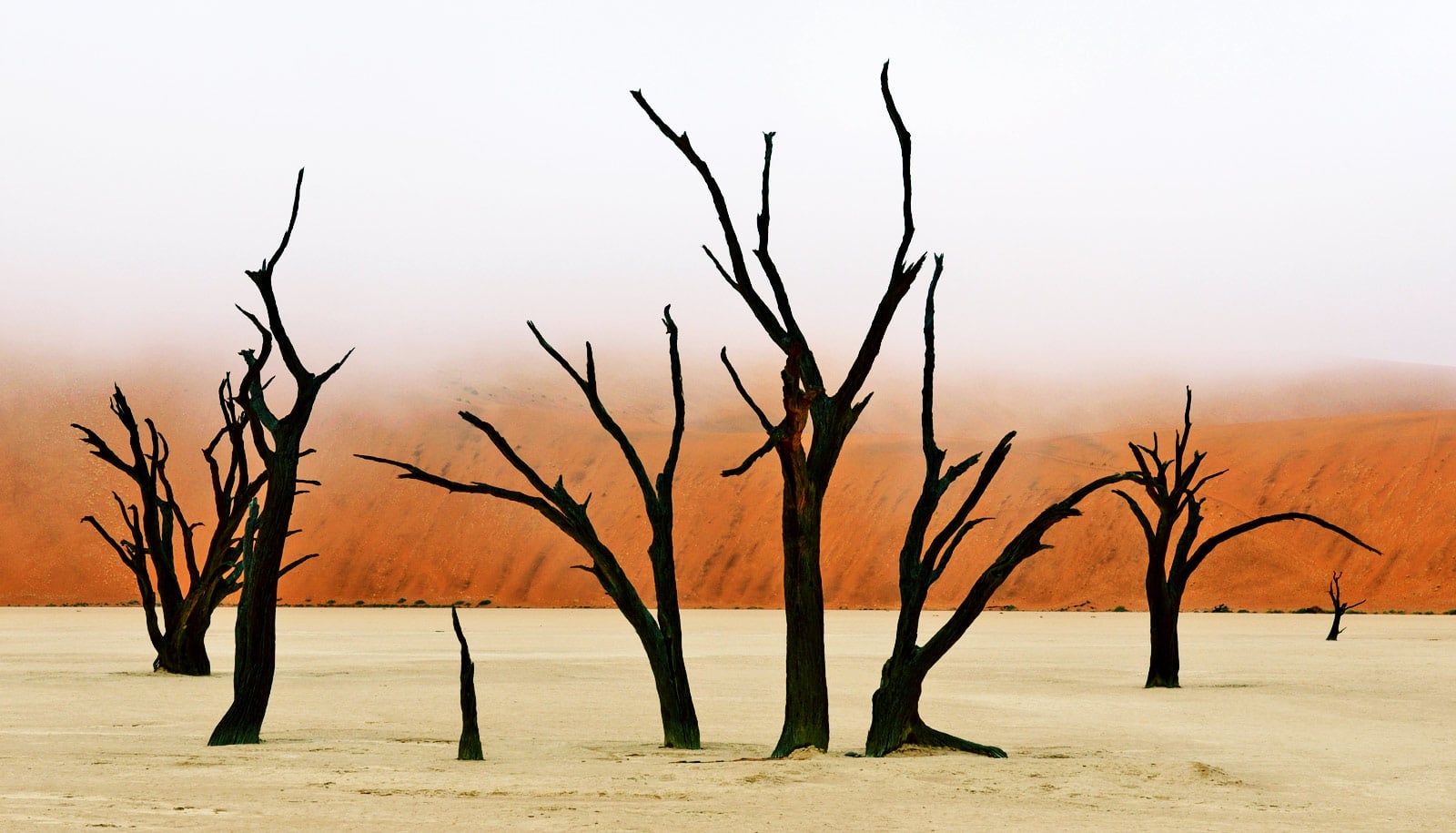The ocean isn’t the sole source of life-sustaining fog and dew for the Namib Desert’s numerous plants and animals, report researchers.
“Knowing exactly where the fog and dew come from will help us predict the availability of non-rainfall water in the future, both in the Namib and elsewhere,” says Lixin Wang, an ecohydrologist and assistant professor of Earth sciences at Indiana University-Purdue University Indianapolis, who led the new study. “With this knowledge, we may be able to determine ways to harvest novel water sources for potential use in water-scarcity situations.”
Surprisingly, non-ocean-derived fog accounted for more than half of total fog events in the Namib over the one-year period of the study. Groundwater-derived fog was the most significant locally generated fog, serving as a source of more than a quarter of the desert’s fog. Soil water, which derives from rainfall and is below the surface but located higher than groundwater, also turns out to be an unexpected source of moisture.
In desert cave, microbes feed on water, rocks, air
Drylands, which in addition to deserts include parched but nondesert areas of the Great Plains and southwestern United States, cover approximately 40 percent of Earth’s land surface and are home to an estimated 2.5 billion people. With global warming, more areas in the United States and around the world are becoming drier and more desert-like.
“Dryland ecosystems have some of the lowest annual rainfall amounts recorded on Earth,” says Tom Torgersen, program officer in the division of Earth sciences of the National Science Foundation, which funded the work. “To survive, these ecosystems recycle water in the form of fog and dew. In the driest places on the planet, even seemingly minor components of the water cycle, such as fog and dew, become major and are critical to keeping the environment alive and functioning.”
Lots more rain once fell on the Sahara
Like other dryland ecosystems worldwide, the Namib is likely to experience changes in its hydrological cycle in response to global climate change. Given the abundance and importance of fog and dew in this desert, it provides an ideal location to study non-rainfall water.
Many parts of the Namib receive virtually no rain.
The Namib, which borders the Atlantic Ocean for 1,243 miles with temperatures ranging from below 32°F (0°C) to 140°F (60°C), is almost completely devoid of surface water. Many parts of the Namib receive virtually no rain. Some years are rainless; in other years, there may be only an inch or two of rain, although some areas may receive as many as four inches. But the Namib does support a wide variety of specially adapted organisms, such as a fog-harvesting beetle. Most of the Namib’s plants and animals are believed to obtain moisture from fog or dew during rainless periods to be able to survive.
Fog consists of tiny droplets of water suspended in air, and dew consists of tiny droplets that form on the surface of plants, soil, and other objects on the ground.
Wang used analysis of stable isotopes in water—the same element with different neutron numbers in the nuclei such as of hydrogen and oxygen—to trace the origins of non-rainfall water. In future research, he plans to explore the mechanisms by which groundwater and soil water become fog and dew. The long-term goal is to expand this ecohydrology research beyond the Namib to a global scale.
The study appears in Science Advances.
Source: IUPUI



